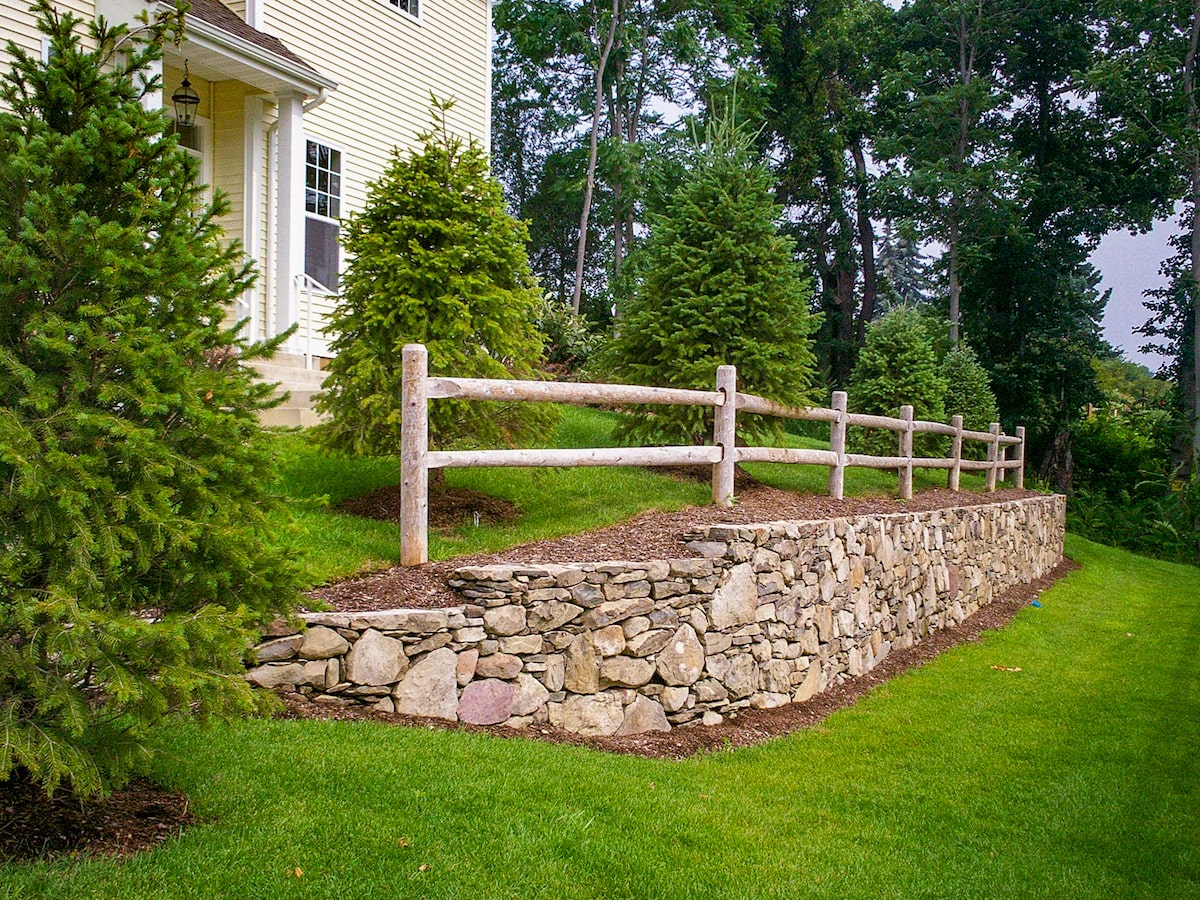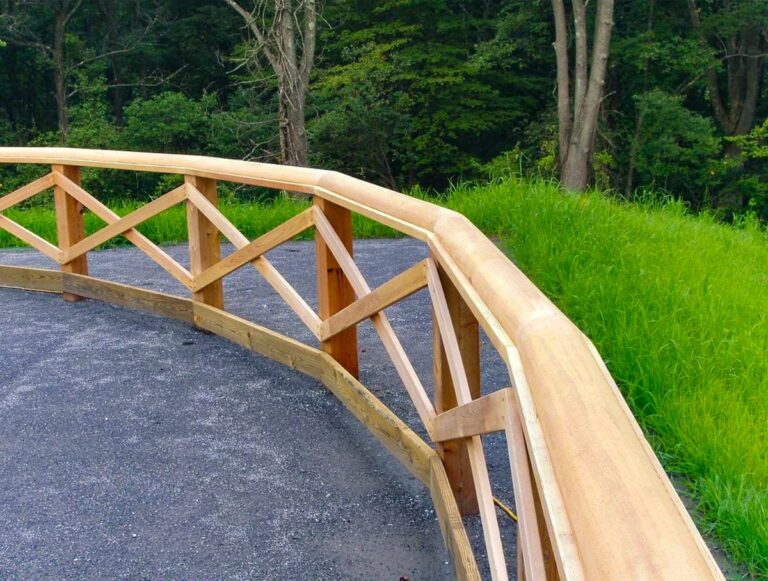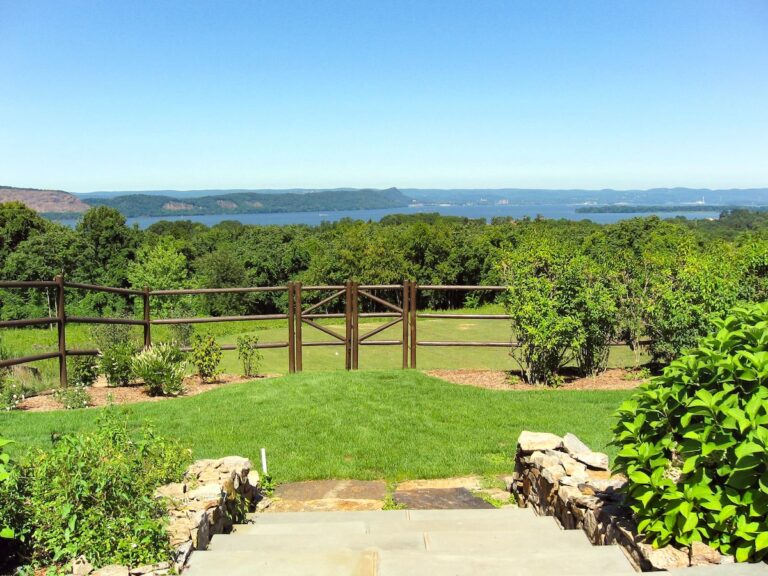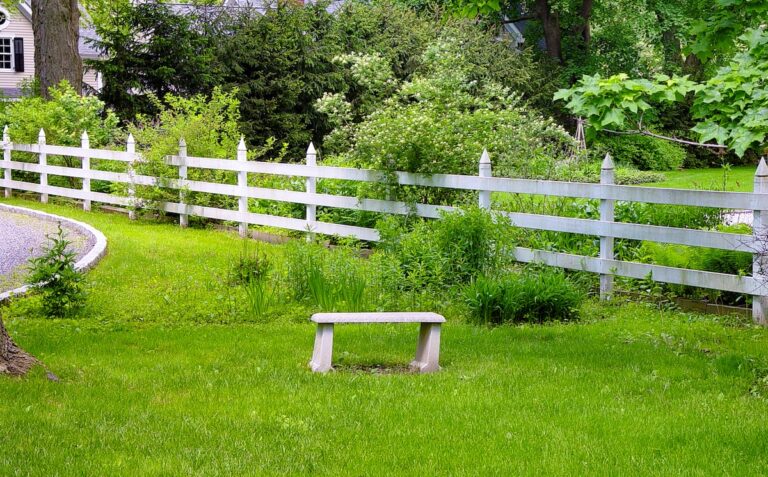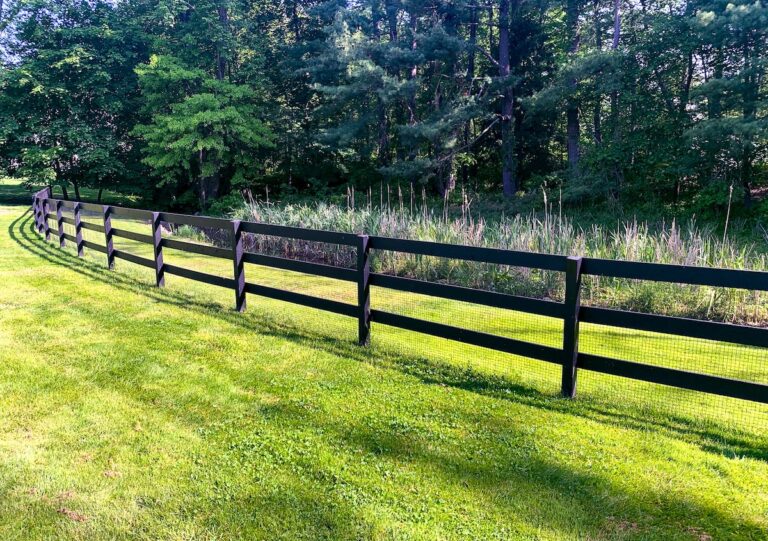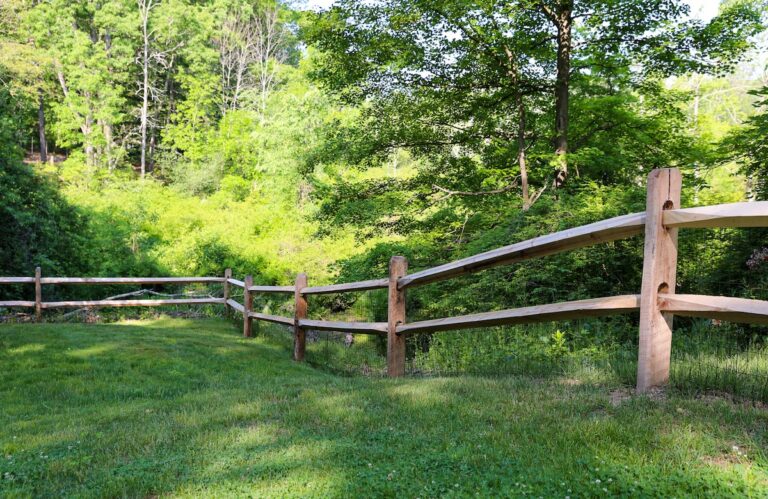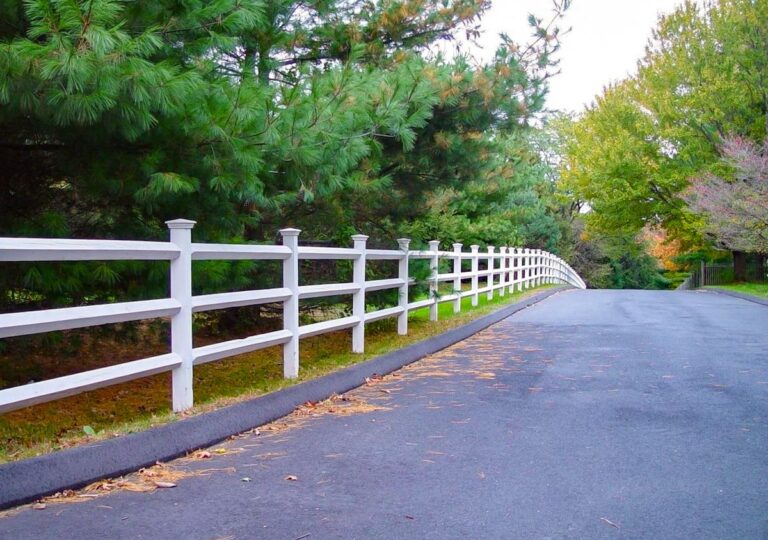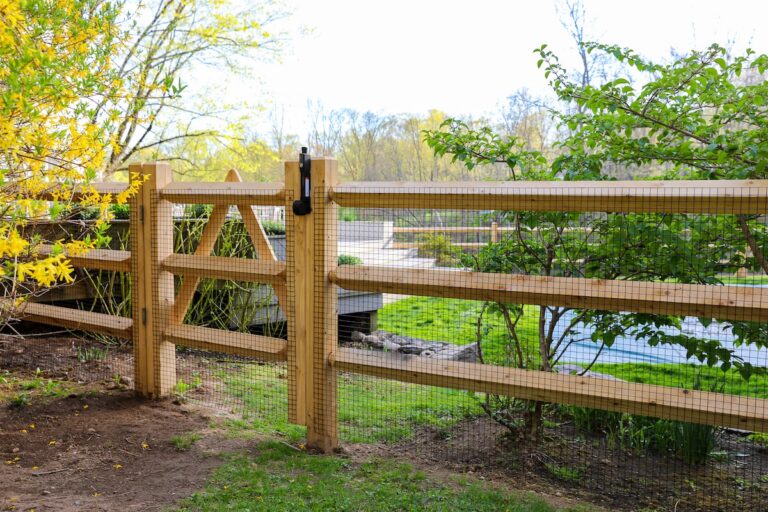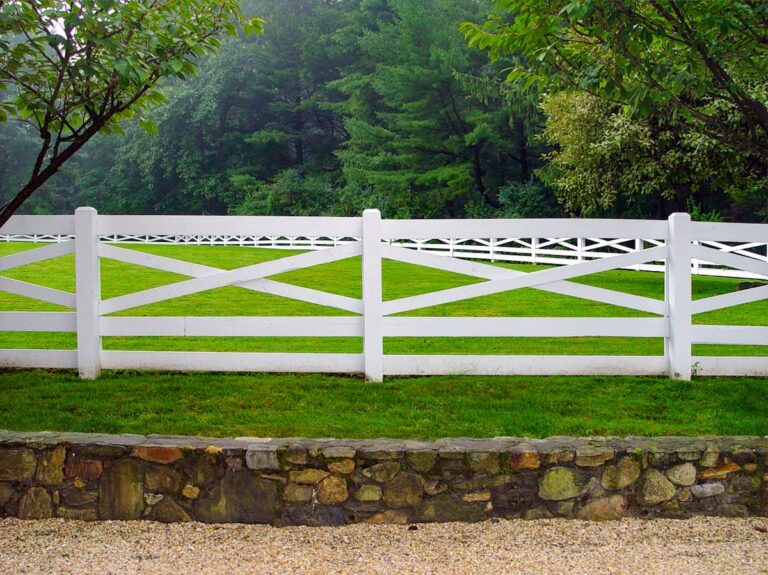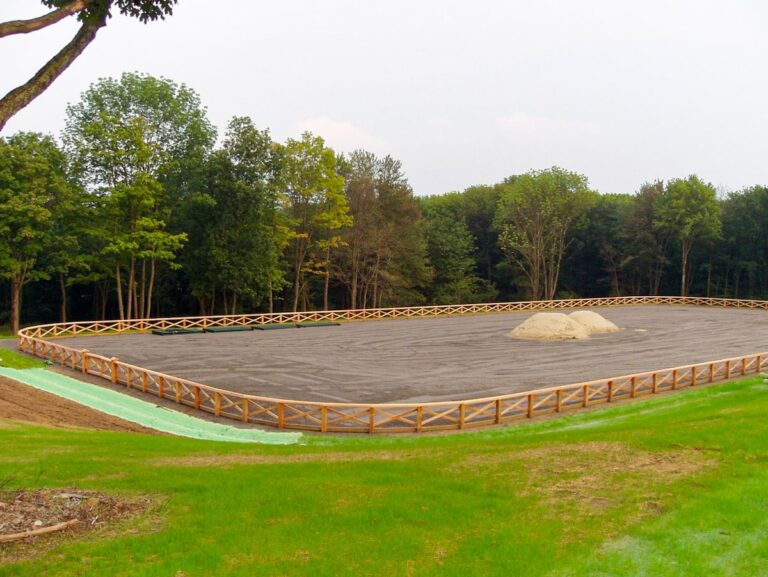You are using an outdated browser. Please upgrade your browser to improve your experience.
Add Rustic Charm to Your Property with Post and Rail Fencing
Post and rail fencing has been the fence of choice for rural properties for centuries, for the simple reason that it’s a sturdy and cost-effective way to enclose large areas of land.
At their most basic, post and rail fences consist of rough-hewn timber posts connecting horizontal planks. However, with modern materials and our full array of customization options, post and rail fencing can be designed to suit your exact preferences.
Styles of Post and Rail Fencing
There are six main styles of post and rail fencing:
Split Rail Fencing
This style uses rough-hewn oak posts and mixed hardwood rails, materials that are a significant step up in quality from the pressure treated wood used by many other companies. The final product is strong, sturdy, and sports a relatively rustic appearance.
Full Round Cedar Fencing
This style has posts and rails that are fully rounded, which presents a more polished appearance than simple split rail. It comes in two alternatives: one with full round cedar that uses wedged ends (the same that are used with split rail designs). This is the most common style. In the other style the rails are doweled out and fit into round holes that are drilled into the posts. This gives a much more contemporary look, but isn’t selected as often since customers are often deliberately seeking a more rustic appearance.
Diamond Rail Fencing
This is a step up from full round cedar. This style uses square posts and square rails, but the rails are turned on their side to make a diamond shape as seen in these photos from the gallery below.
Post and Board Fencing
Featuring wider boards than typical post and rail fencing, this style is typically constructed with 6-inch-wide oak boards set onto square posts, such as in this example. This style can be painted black to help it blend in better, or left unpainted to let the wood weather naturally.
Paddock Style Fencing
This is the most common type of fence used for horse enclosures (in fact, it’s often just called “horse fencing”). The rails – typically made from horizontal oak boards – are fastened to the flat, inward-facing side of otherwise rounded posts, so that the posts are left on the outside of the enclosure. There are usually at least four rows of rails so that the fence is five feet tall at a minimum to discourage horses from attempting to jump over. Typically an additional board is installed on the face of each post to cover the seams where the boards come together.
This style of fence is great for horses because it’s very strong. It can withstand horses pushing up against the rails, and the face boards help protect the horses from the seams in the boards.
Fully Custom Post and Rail Fencing
For customers who want something truly unique, we create fully custom post and rail fences to meet your exact requirements. For an example, see the gently curved horse paddock fencing with diagonal rails featured in the image gallery below. The top cap board was custom routed per the customer’s specifications to create that half-rounded look and feel along the top rail.
In addition to these styles, we can also add welded wire mesh to any structure so that the fence will meet local pool codes, keep dogs or kids in a yard, or work as a rustic garden enclosure.
Materials for Post and Rail Fences
Our post and rail fences come in a variety of high-quality woods including oak, mixed hardwood, white cedar, and western red cedar. We typically use hardwood for split rail designs, white cedar for full round cedar and most diamond rail designs, and western red cedar for our fully customized post and rail projects.
While less common for this style of fencing, we also work in mahogany, which has a distinctive red-brown color and is very durable, and Brazilian ipe, which is so strong it has a class A fire rating (the same as concrete or steel).
The Advantages of Post and Rail Fencing
There are good reasons why post and rail fencing has been a popular choice for hundreds of years. Here are some of the benefits:
- Durability – The robust construction of posts and rails can withstand harsh weather conditions and last for many years without a lot of intensive maintenance.
- Open Design – Post and rail fencing allows for visibility and airflow, making it ideal for containing children, pets, or livestock without obstructing views or disrupting natural habitats. Its traditional and aesthetically pleasing appearance blends well with natural landscapes.
- Quick installation – Post and rail fencing is relatively easy to install, which can help reduce labor costs. This makes it a cost-effective option compared to other types of fencing, especially over large areas.
How Long Does Post and Rail Fencing Last?
The lifespan of a fence can vary based on a range of different factors, including weather conditions, how regularly it’s maintained, whether the wood is stained and painted, etc. With the high-quality, decay-resistant woods we use at Garon, your wood post and rail fence will likely last 20 to 30 years with regular maintenance.
What’s the Difference Between Split Rail and Post and Rail Fencing?
Customers are sometimes confused by the distinction between “split rail fencing” and “post and rail fencing.” Post and rail fencing is a broad term that refers to any fencing system that uses vertical posts connected by horizontal rails. Split rail fencing is a distinct style of post and rail that uses logs that are split lengthwise then inserted into notched posts without the need for nails or fasteners.
Split rail fencing has a rustic and traditional appearance, often with deliberately uneven, rough-textured wood that enhances its natural look. It’s typically associated with historic or pastoral settings. Here’s an example.
Other types of post and rail fencing, on the other hand, sometimes use smoother, often milled wood. The rails can be nailed or screwed into the posts, creating a more uniform, polished appearance. This type of fencing can be more modern-looking and is versatile in its application.
Free On-Site Consultation in Connecticut, New York, and New Jersey
Based out of Westchester County, NY, Garon Fence serves Connecticut, New York, New Jersey, and the greater New England area. Call 914-666-5596 or contact us online to visit our factory showroom in Bedford Hills or arrange a free, on-site consultation.

